Arts & Entertainment
Staying in tune
Emily Saliers on the economics of recording circa 2013, caring for guitars on the road and more
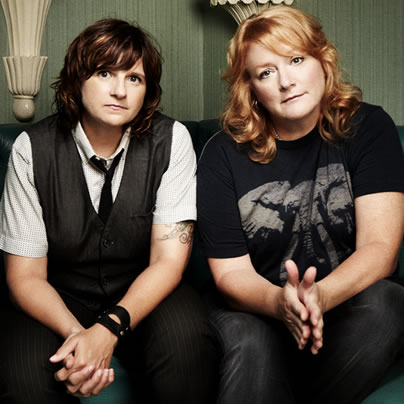
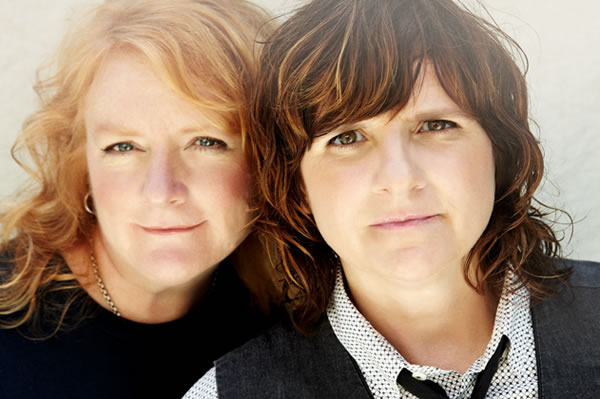
The Indigo Girls are Amy Ray, left, Emily Saliers. (Photo by Jeremy Cowart; courtesy Propeller Publicity)
Indigo Girls/Joan Baez concert
Wolf Trap
1551 Trap Road
Vienna, VA
Wednesday
8 p.m.
$28-$42
wolftrap.org
indigogirls.com
It’s easy to take the Indigo Girls for granted. They keep the albums coming every couple years, play the D.C. region often and despite their insistence on keeping things fresh, still manage to feel — and sound — like sonic comfort food.
From her home in Atlanta on the eve of embarking on a 10-date mini-tour with Joan Baez (sandwiched between a slew of other dates), Emily Saliers took a few minutes with us and was as unpretentious and down-to-earth as she’s always been. They play Wolf Trap Wednesday night. Her comments have been slightly edited for length.
BLADE: Why Joan, why now?
SALIERS: Our manager knows Joan’s and we’ve been friends for about 10 years and have toured with her before. The timing was just right and Joan was wanting to do it.
BLADE: Full band?
SALIERS: Yeah, we’re bringing the Shadowboxers with us. They’re a great group of young guys and an up-and-coming band. Usually they open for us but since this will be a full show with two sets, they’re the house band. We call Joan our matriarch and then these guys are younger so I really like the intergenerational aspects of the tour.
BLADE: Will you be collaborating with Joan on anything or is it separate sets?
SALIERS: We’ll do ours first, then Joan, then we’ll do a handful of songs together.
BLADE: Picked the songs yet for the collaborations?
SALIERS: We know we’ll do “Don’t Think Twice It’s All Right” but the others are still in the works. We might do a couple Indigo Girls songs and a couple of Joan’s. There’ll be others we might do some nights and others on other nights.
BLADE: For some musical acts — perhaps even most — the general public tends to heavily identify the band or singer with the era in which it had its biggest commercial success. This would be true of both Joan Baez and Indigo Girls. Yet fans know there’s usually so much more to an artist than one era. Does this bother you?
SALIERS: I know that kind of typecasting musically exists. It doesn’t really bother me although I wish people would be a little more broad minded when it comes to such things. We continue to put out new records every couple of years and we’ve had our fingers all over the board in all kinds of genres. I think our discography proves we’re still viable and relevant. For a long time we were just the lesbian band or people just thought of the skits on “Saturday Night Live.” But Amy and I would be so bored if that’s all we were and we feel we’ve done our very best work since then. It’s the same thing in many ways with Joan. She was and still is a tremendous activist and it just goes on and on and on. She’s been very brave and courageous in dangerous times and she’s been true to her vision of social justice. It’s not just old stuff from the ‘70s. She’s that kind of person to us and hopefully we can inspire people the same way.
BLADE: So many acts now are just touring on their catalog or might do an EP here or there yet the Indigo Girls, like you said, have kept up with adding to your discography. Has there been any sense that they’ve yielded diminishing returns in some ways or are they creatively satisfying enough for you to have kept at it?
SALIERS: We really don’t make any money selling records, I’ll tell you that. Those days are long, long gone. But I get so fucking excited when an artist I love has a new album out so we try to think of the fans and approach it that way. It’s important for the fans and also for our own musical growth. And yes, we have to think economically, which is a total bummer. There were some glory days when we didn’t have to. It does suck sometimes. Like just recently we were going to do a symphonic record and right in the middle of planning it, the union law changed for the musicians and the studio scale just took it totally out of our league. It’s a shame because we were dying to make that record, but of course we’re also not going to go in the hole for tens of thousands of dollars to do it. It’s just a very different landscape than we came up in so we make a lot of tactful decisions based on economics while also honoring our belief that we have to keep making new music.
BLADE: You play D.C. regularly. How are audiences here different from other comparable-size regions?
SALIERS: D.C. audiences are really distinctive. Like Florida in the sense that, well, it’s just so different from anyplace else. Just kind of this strange, exotic place. D.C. has been very loyal to us and we love playing Wolf Trap which in some ways I can’t believe we can still play it because it’s one of the larger venues but we always do well there and we have such a great time. With many amphitheaters the spacial difference can really sop up a lot of the energy but that doesn’t happen at Wolf Trap.
BLADE: There are many, many lesbian singer/songwriter-type musicians who have and have had loyal followings in certain circles but never cracked the mainstream zeitgeist in any way. How do you think you and Amy managed to do that?
SALIERS: I think a lot of it was really just timing. We were signed in the era when you had people like Tracy Chapman and Melissa Etheridge and Jewel and Suzanne Vega and a slew of women with acoustic guitars selling a bunch of records. We got signed at that time and radio was friendly to us then. REM gave us a leg of their tour which really helped with visibility. If we came out now, we’d just totally be swimming upstream to maintain successful long careers. I also think because Amy’s music is different from mine, there’s kind of two musical lives playing out here, people don’t get bored by it. We don’t just think of it as music with acoustic guitars. I mean Amy rocks hard. But the reality is it’s a male-dominated business and most women artists have to sell their sexuality to be successful. For men it’s true to a degree but not the same extent. Rock and roll is a male genre and that’s really its power structure.
BLADE: How many guitars do you travel with?
SALIERS: We have these massive guitar coffins, they’re called, these travel cases where a bunch can fit in rather than having to line them all up individually. Let’s see, probably about 15-20 including banjo, mandolin and classical guitar, which we use for a few songs.
BLADE: Some folks — perhaps the less musically inclined — have asked if it’s really necessary to keep changing guitars every song. Is it because different tunings are used for different songs, overall sonic variety or what? I’m sure you have a guitar tech, right?
SALIERS: It’s all those things, yes. It may seem a bit absurd but trust me, if we didn’t do that or have a guitar tech, which is a very necessary luxury. Our guitar tech Sully has been with us 17 years and really is part of the fabric of the Indigo Girls. But yes, we’d spend half our set just tuning if we didn’t have her. It really contributes a lot to show flow. It really disrupts the flow of things if you have to stand there and keep tuning. So part of it is keeping things interesting for the audience, too. Doing some on mandolin or some on banjo varies it up. If it were all the same sonically it would be very boring.
BLADE: Did you have to learn good pitch, both with the guitar and vocally, or did that always just come natural for you? Are there ever times where you go back and think, “Yikes, we went a little flat there.”
SALIERS: Oh yeah, it happens all the time but I grew up in a very musical family and singing in choirs so we were taught to be very mindful of pitch and learned all the little tricks you can do to stay on pitch. I have a good ear and can always tell if something’s a little flat or sharp. I’m very mindful of that, especially on records. In fact, that’s one way Amy and I differ a little. Her feeling would be if a take catches the vibe but is a little pitchy, she’d be more inclined to go with it. I have a little different approach. If the pitch is off, I just can’t live with it.
BLADE: How long of a set do you have planned for next week?
SALIERS: Probably an hour to and hour-15 then about four songs with Joan.
BLADE: Thanks for your time!
SALIERS: Thanks, take care.

The Gay Men’s Chorus of Washington perform “The Holiday Show” at Lincoln Theatre (1215 U St., N.W.). Visit gmcw.org for tickets and showtimes.
(Washington Blade photos by Michael Key)
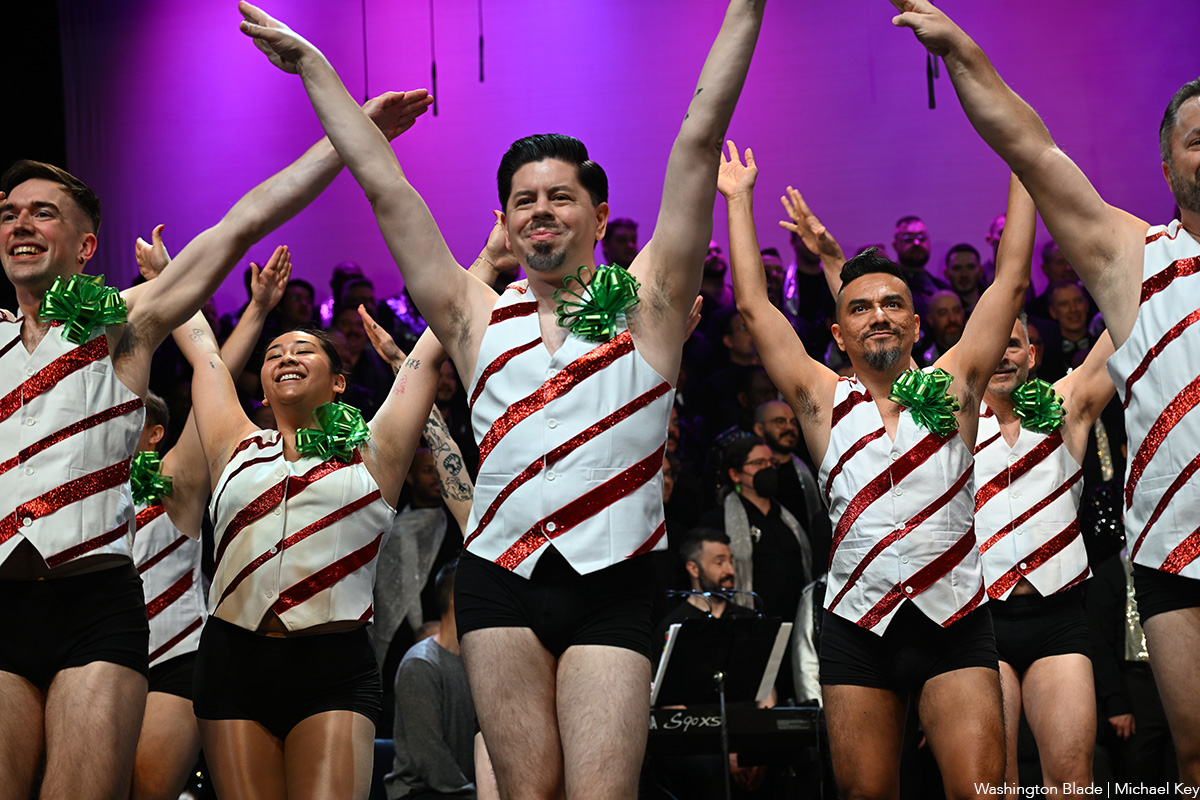


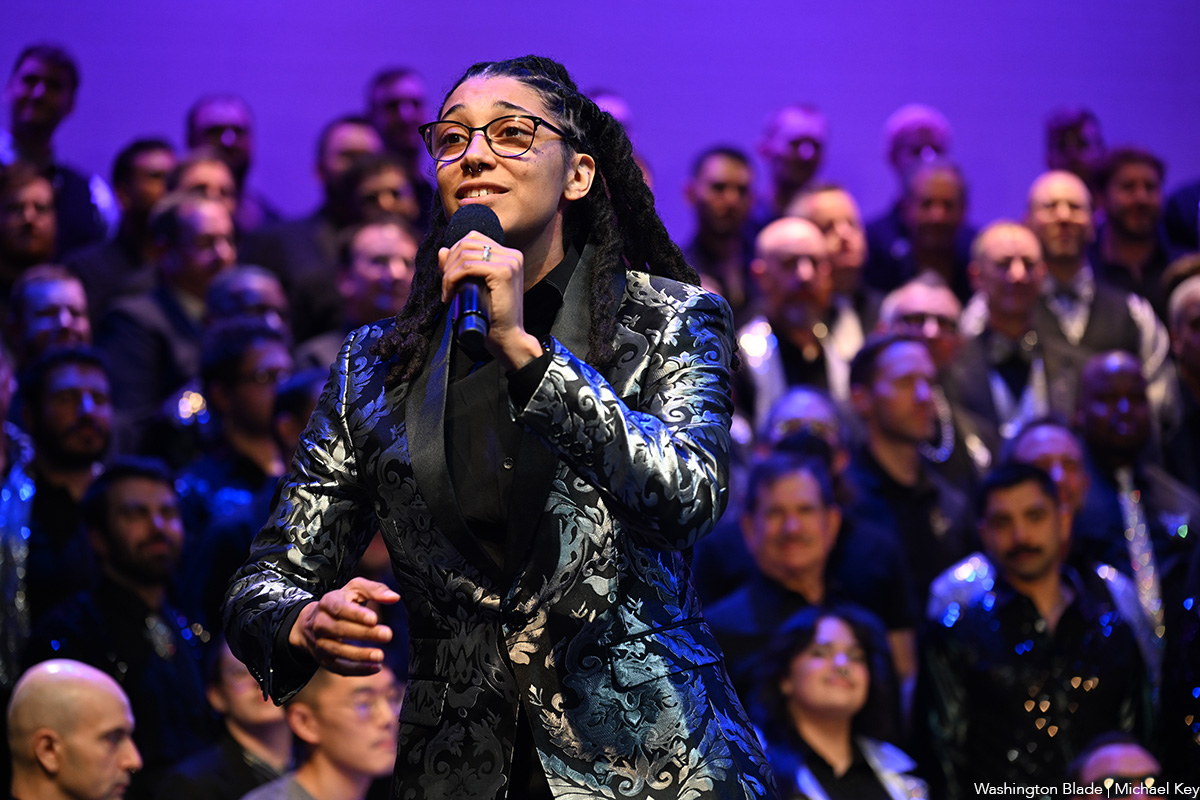
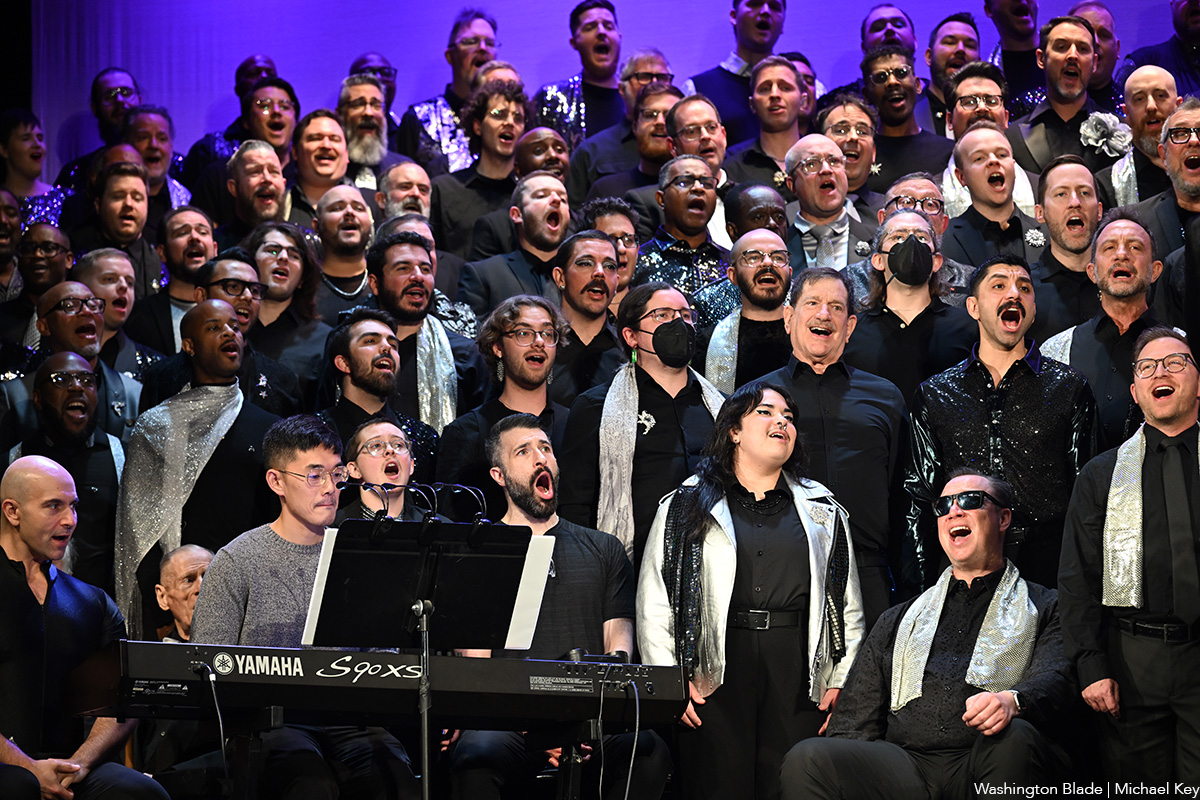






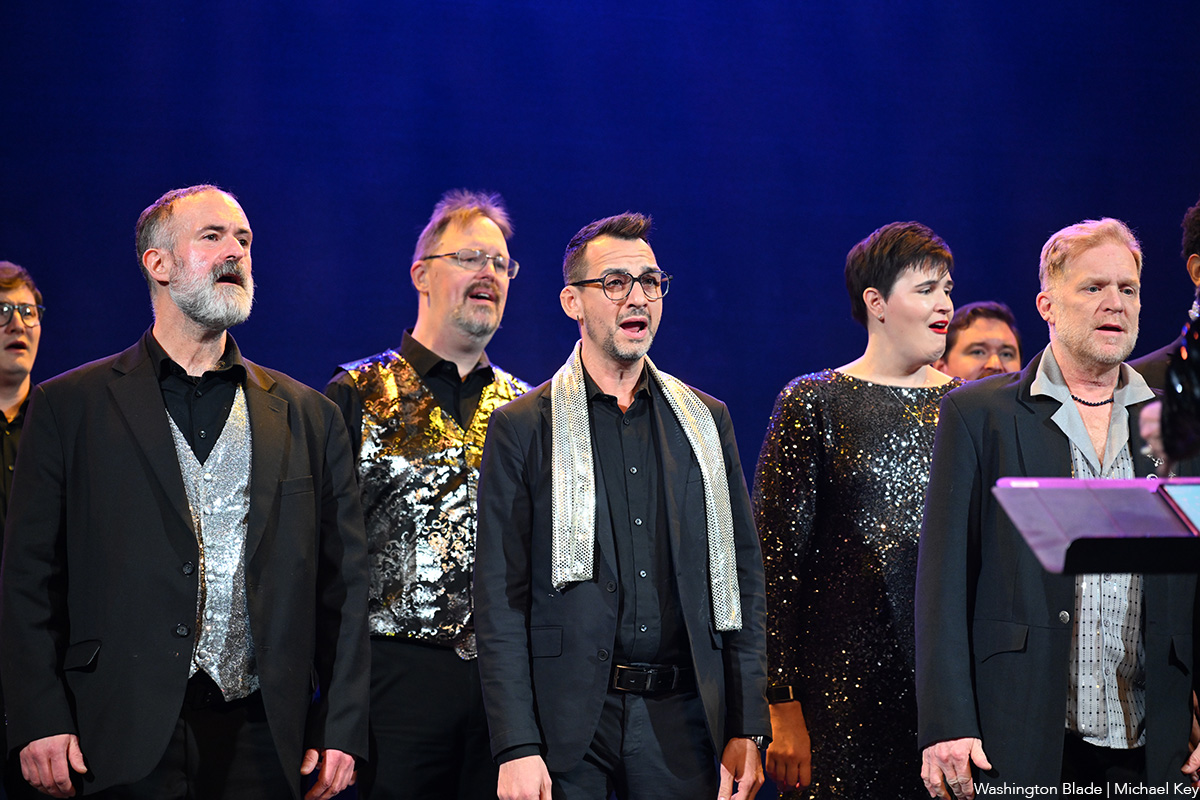
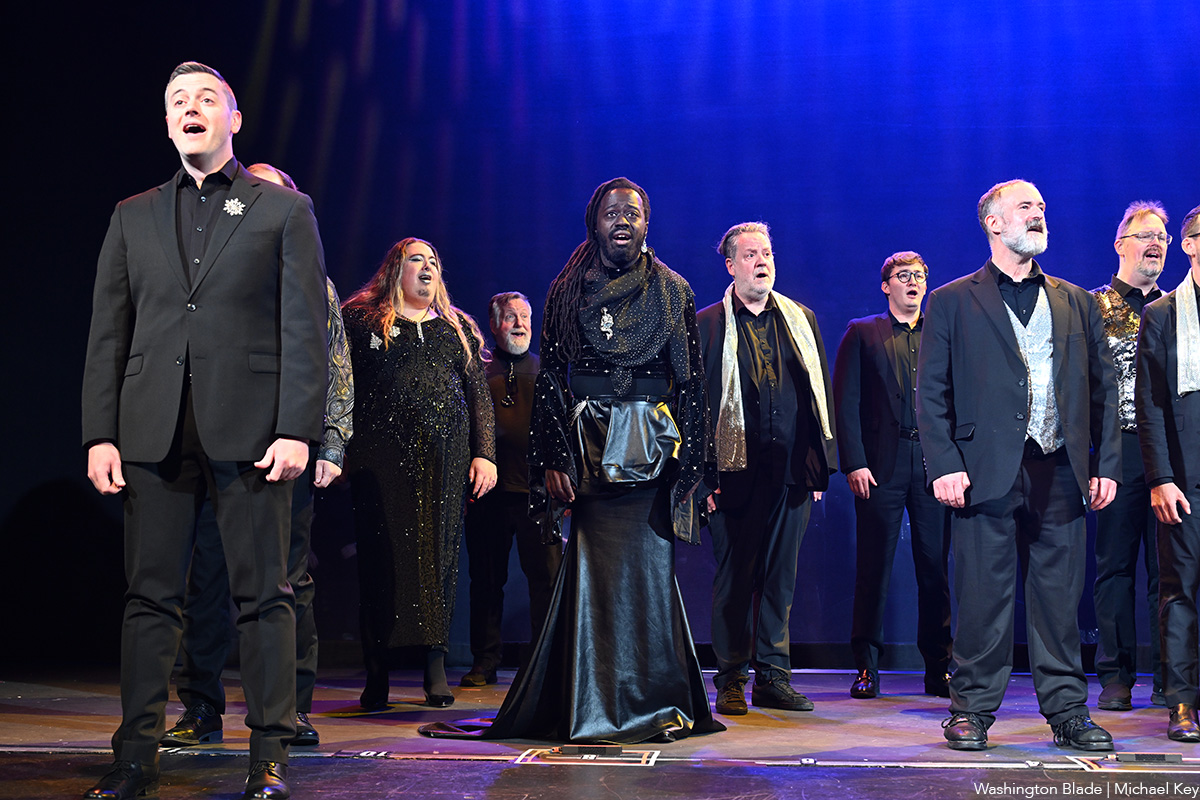
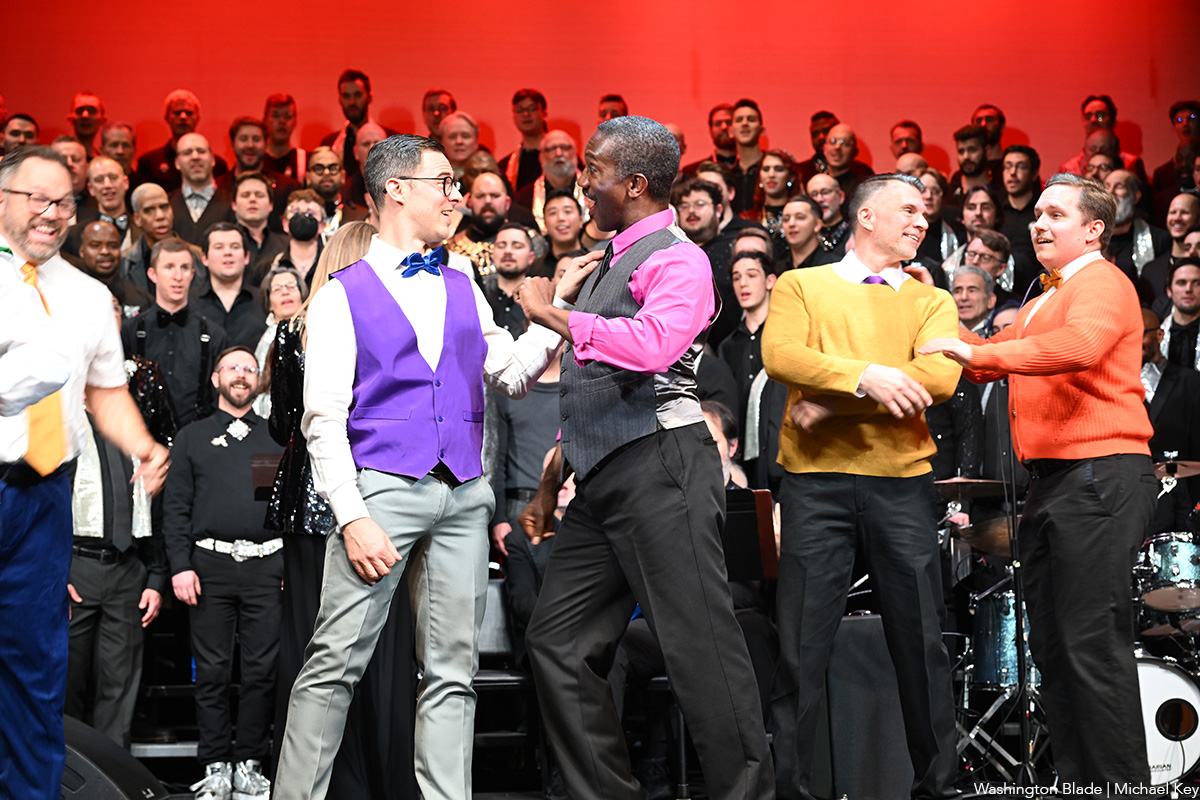
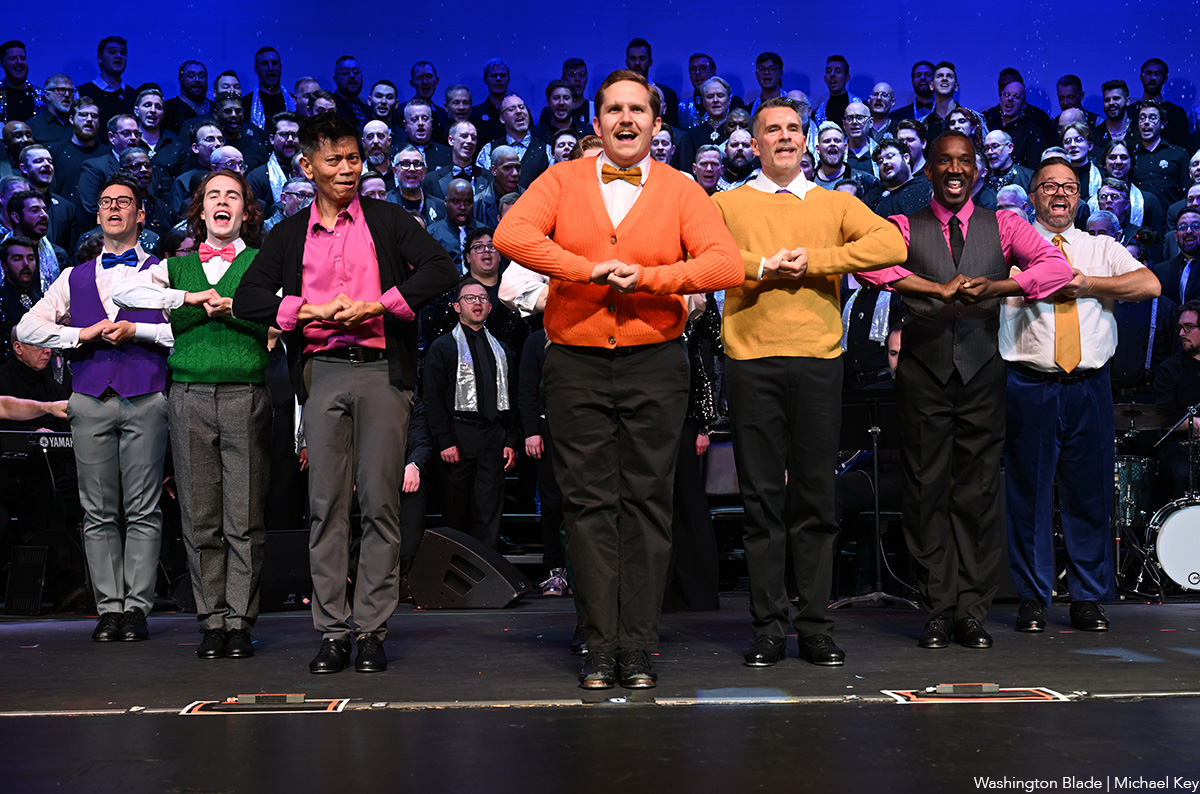

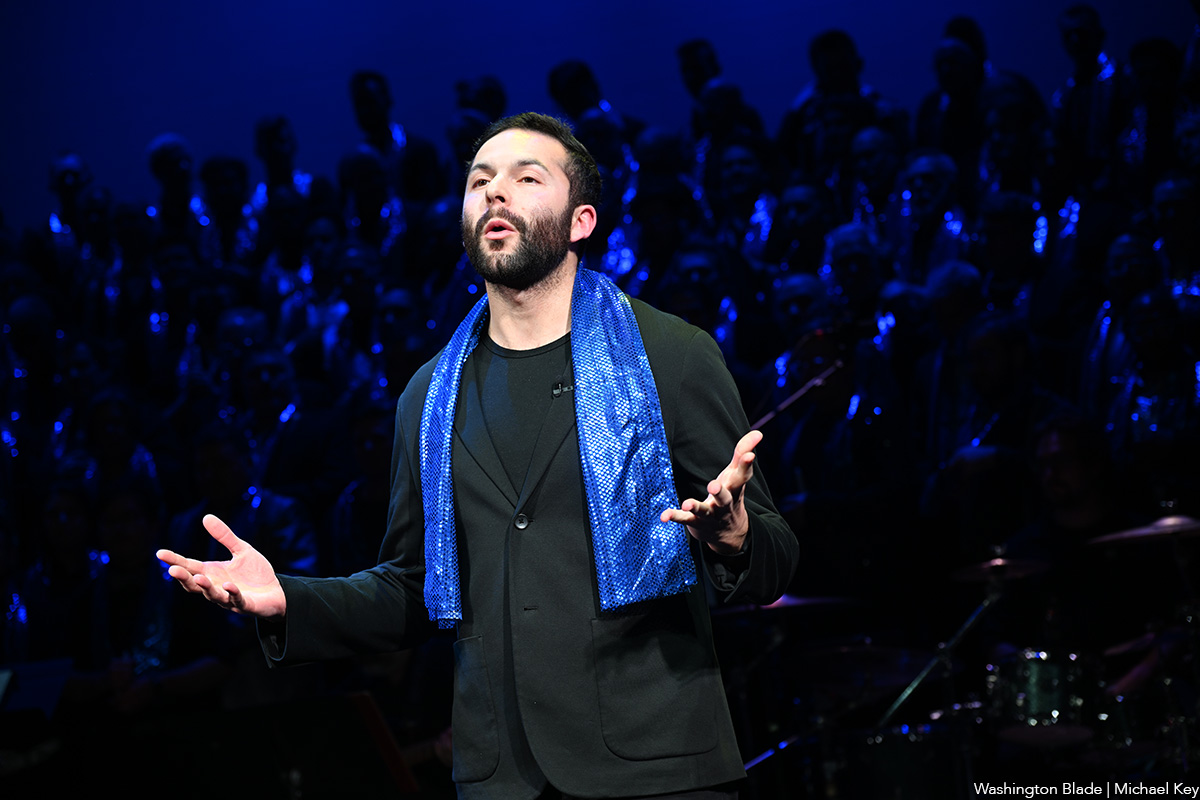
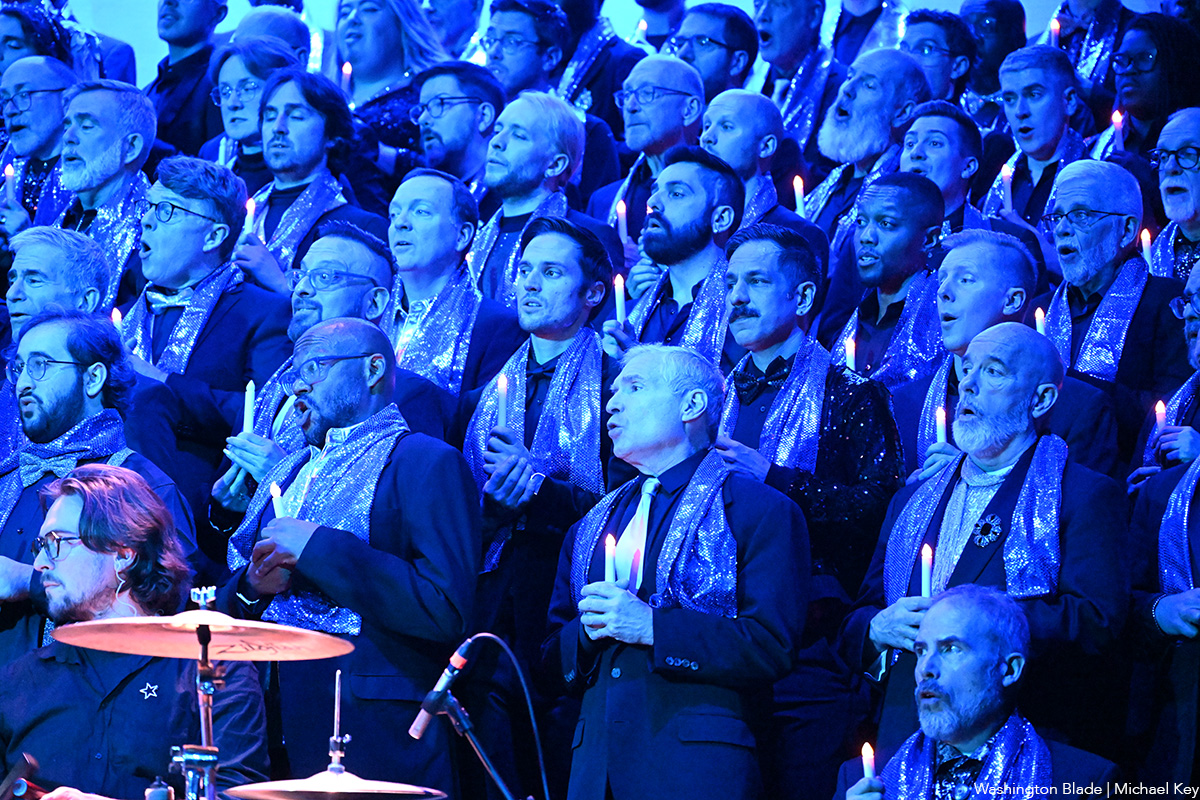
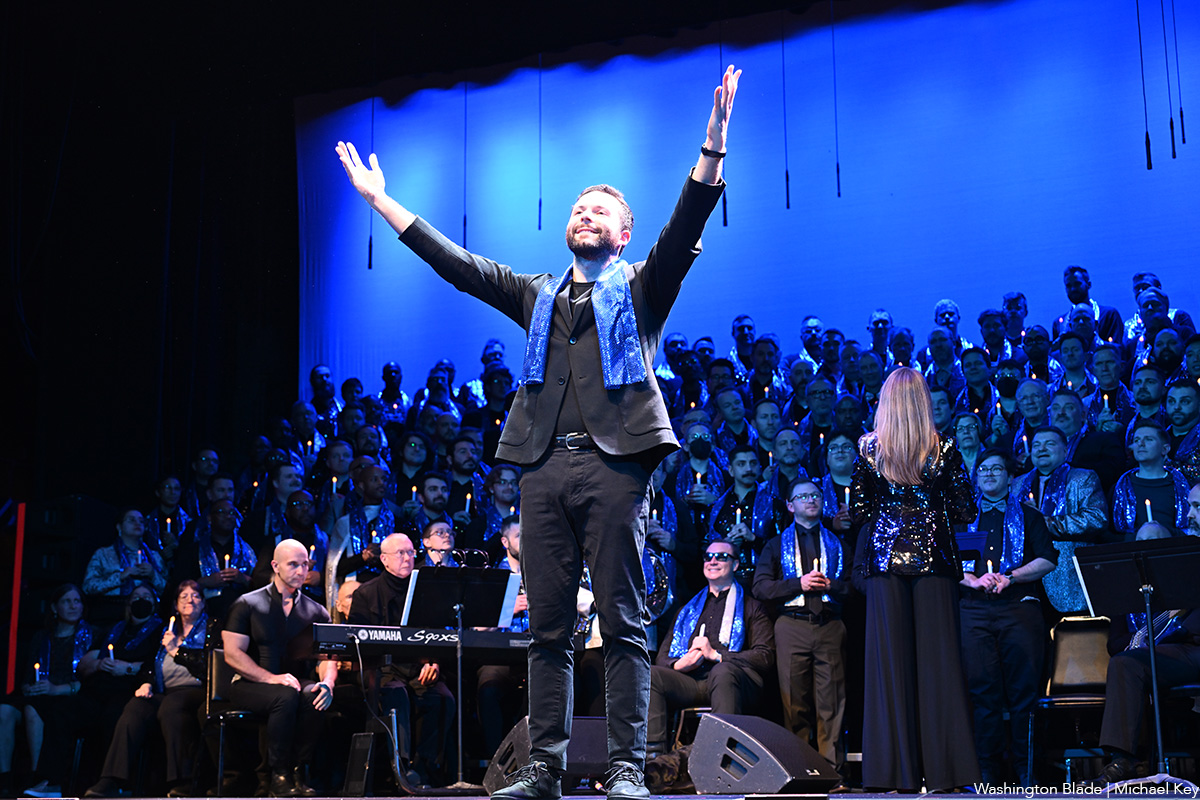


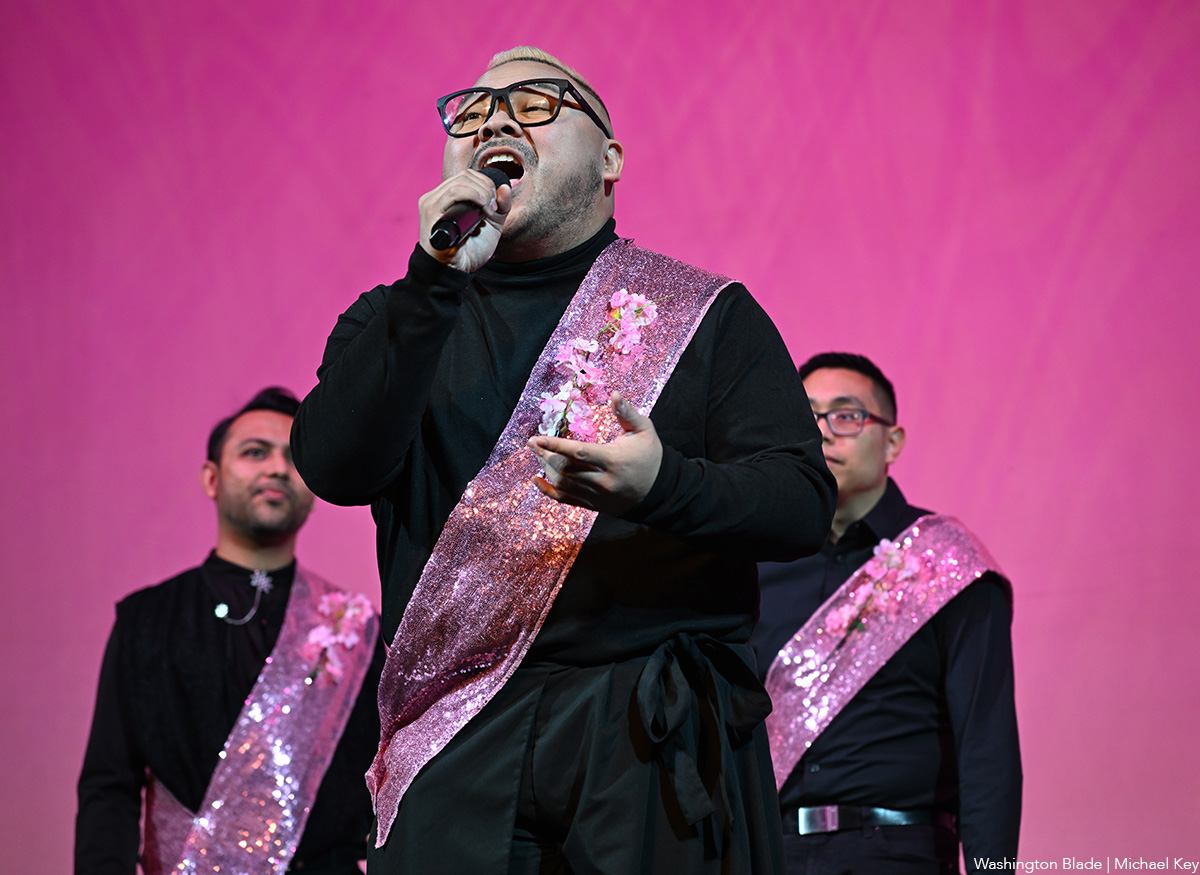

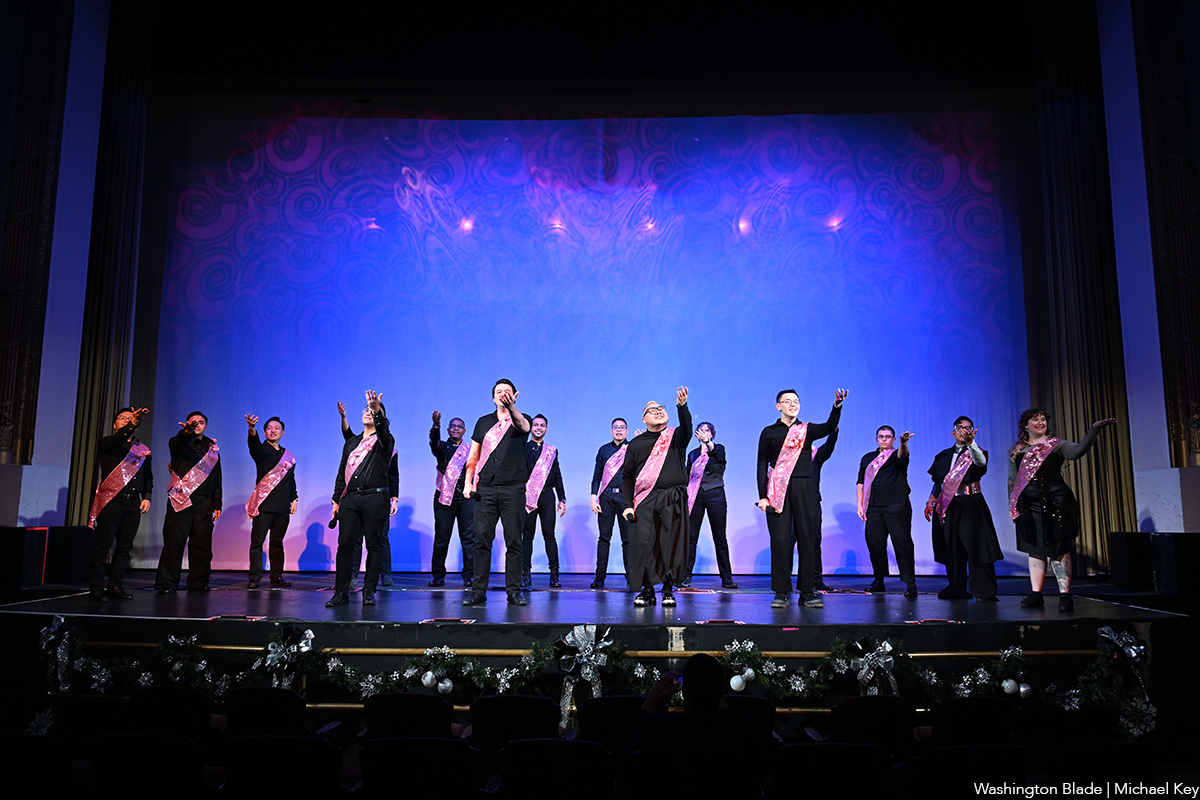
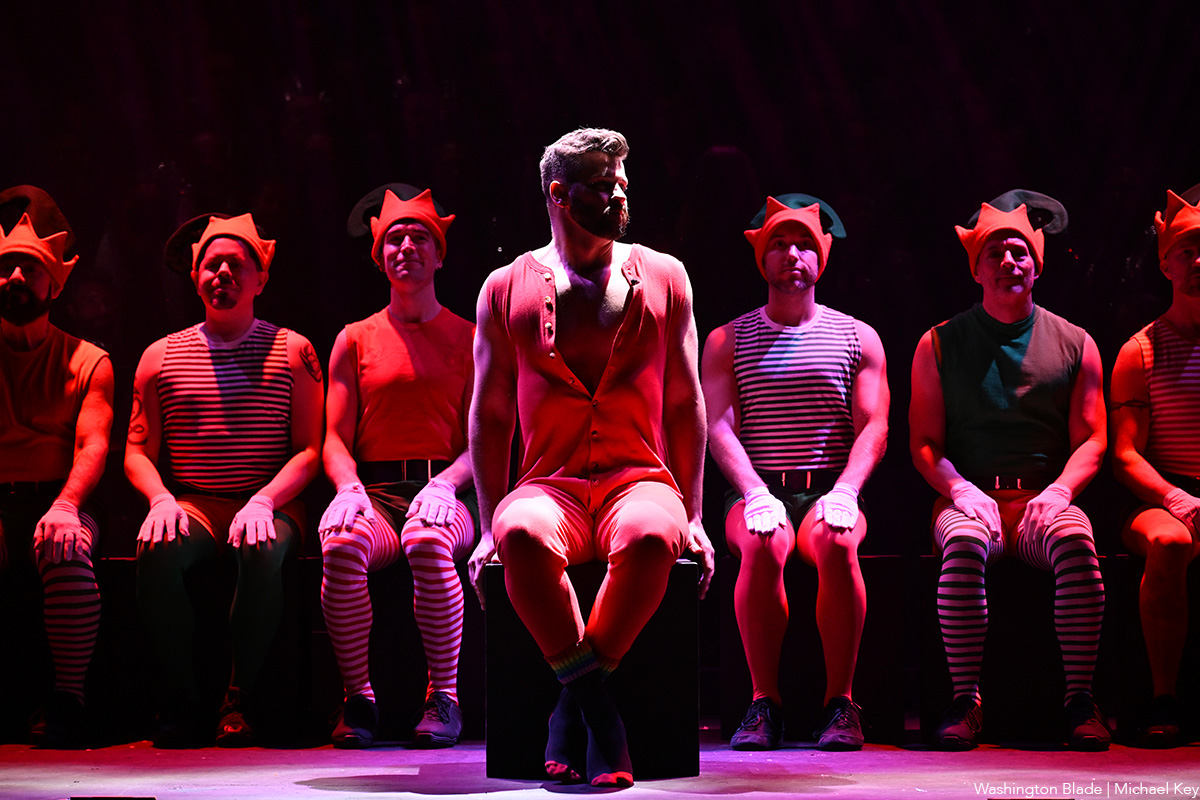

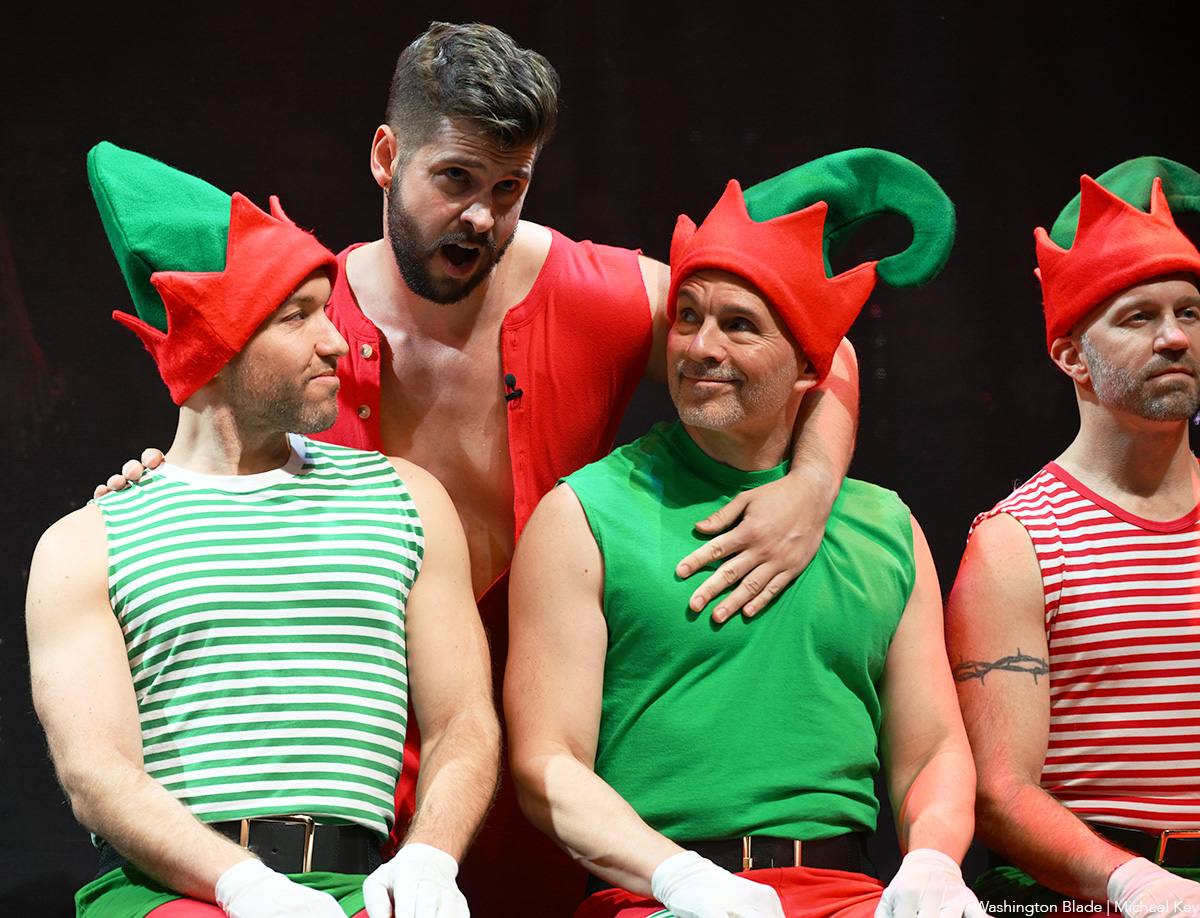

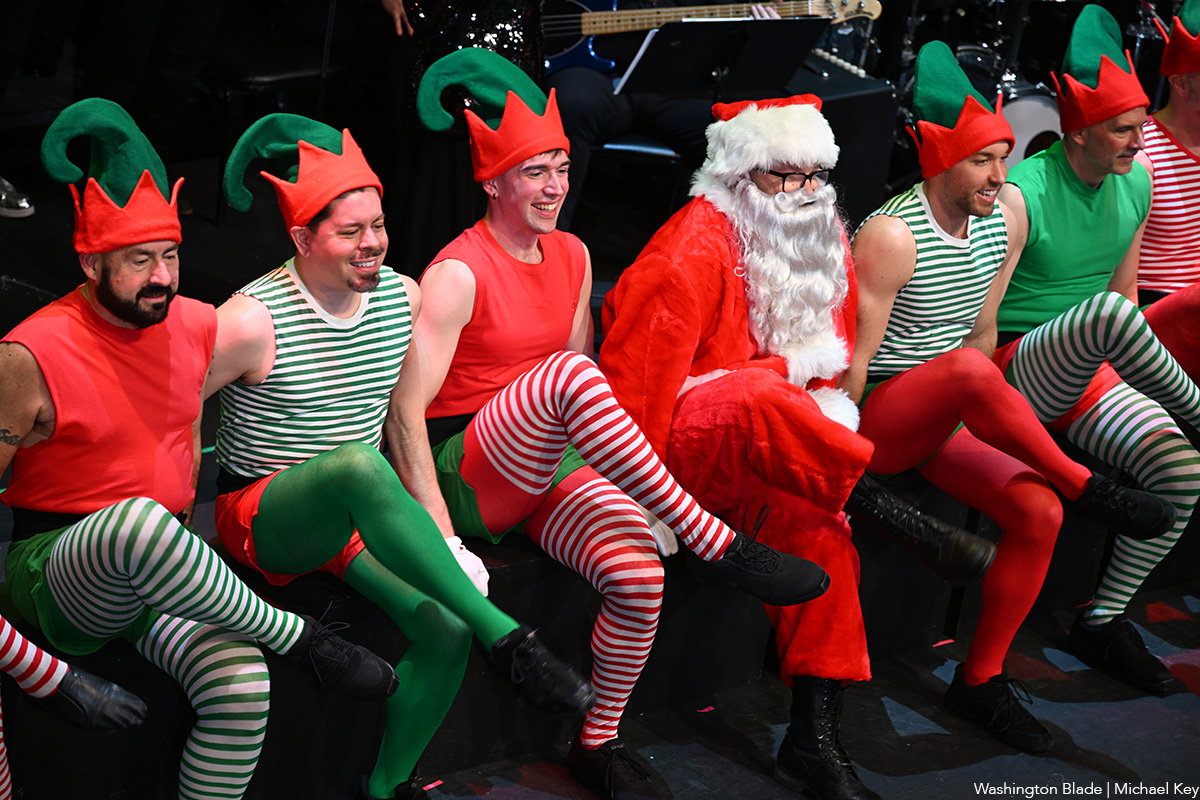
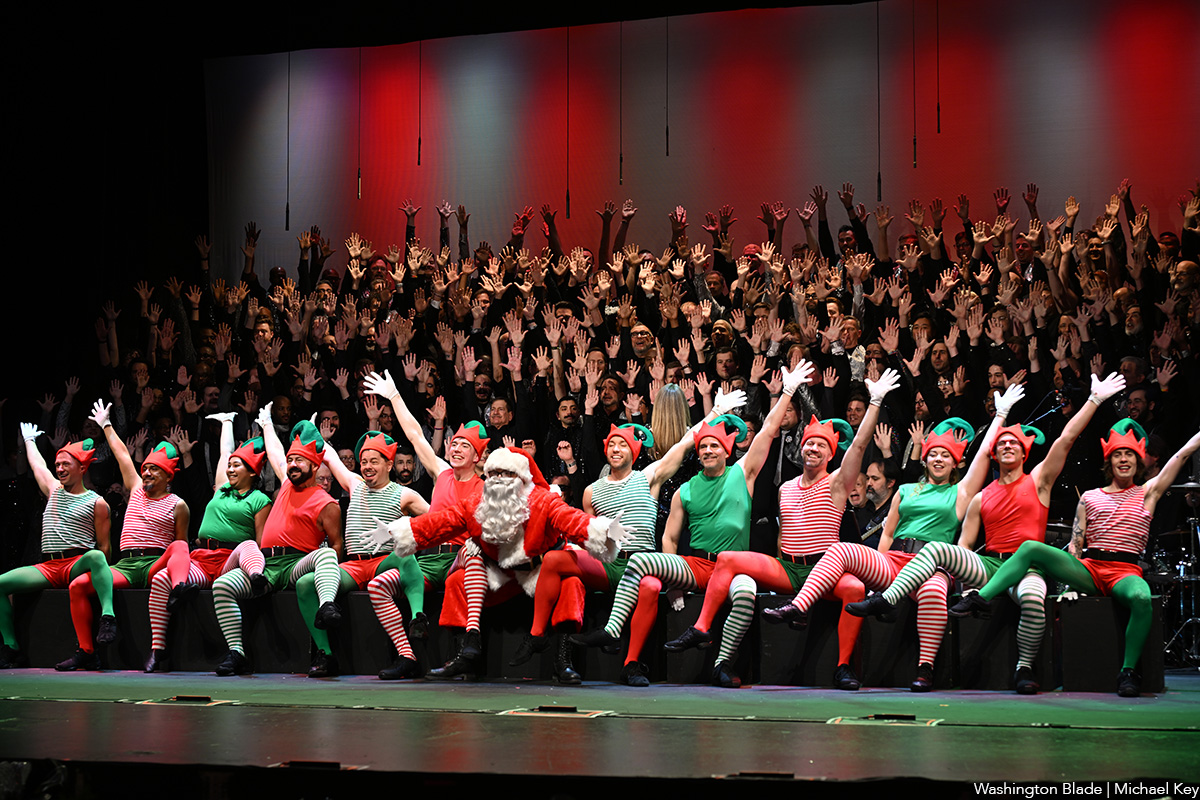

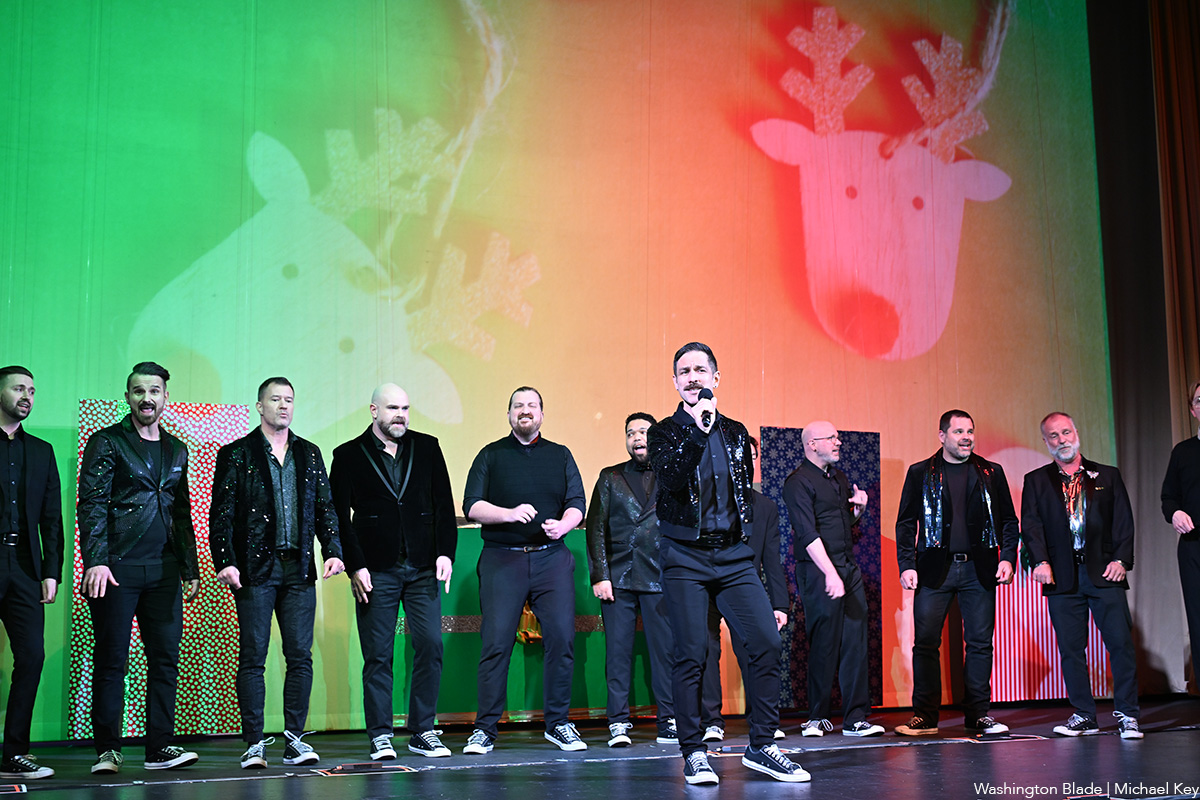
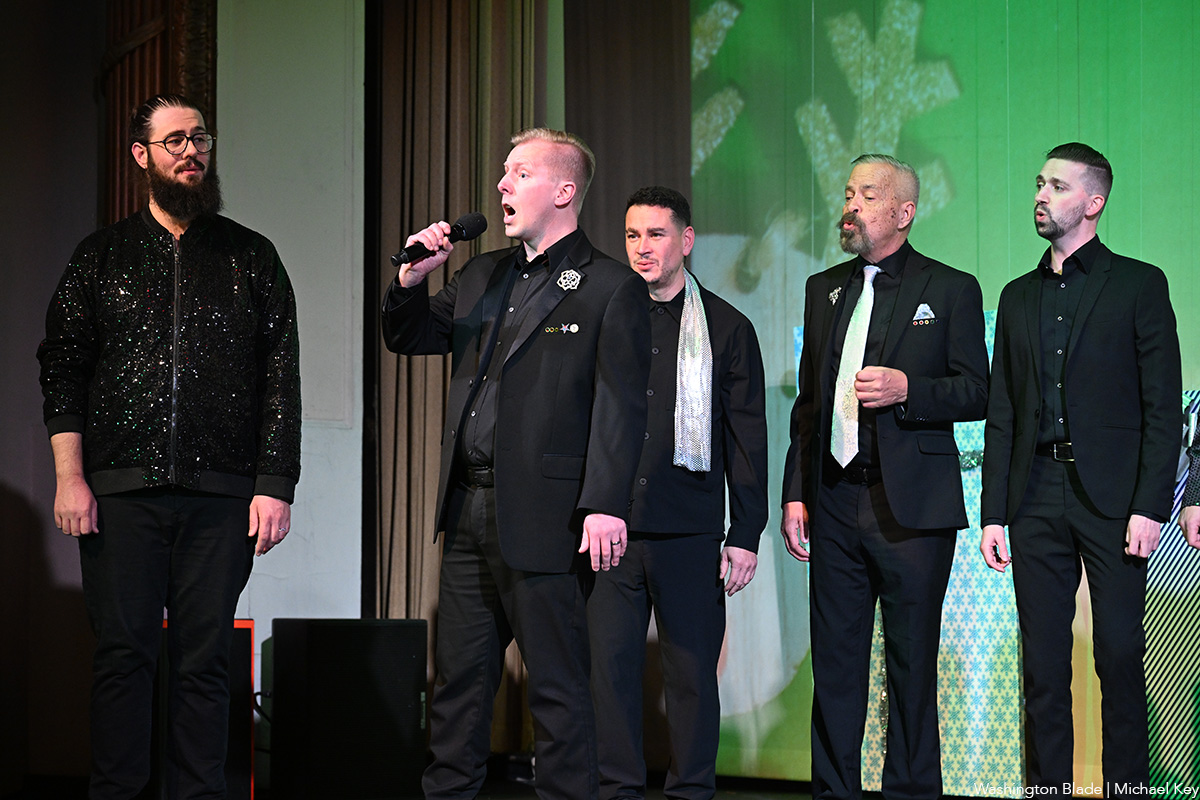
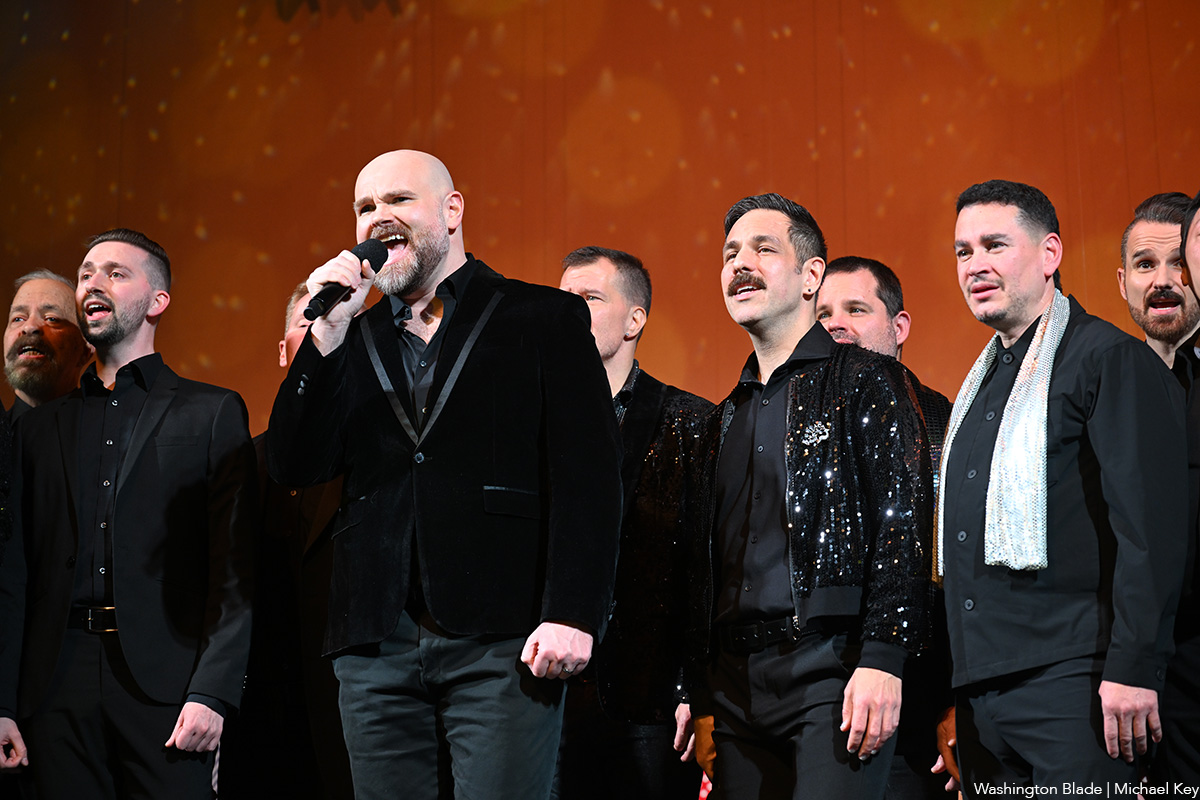
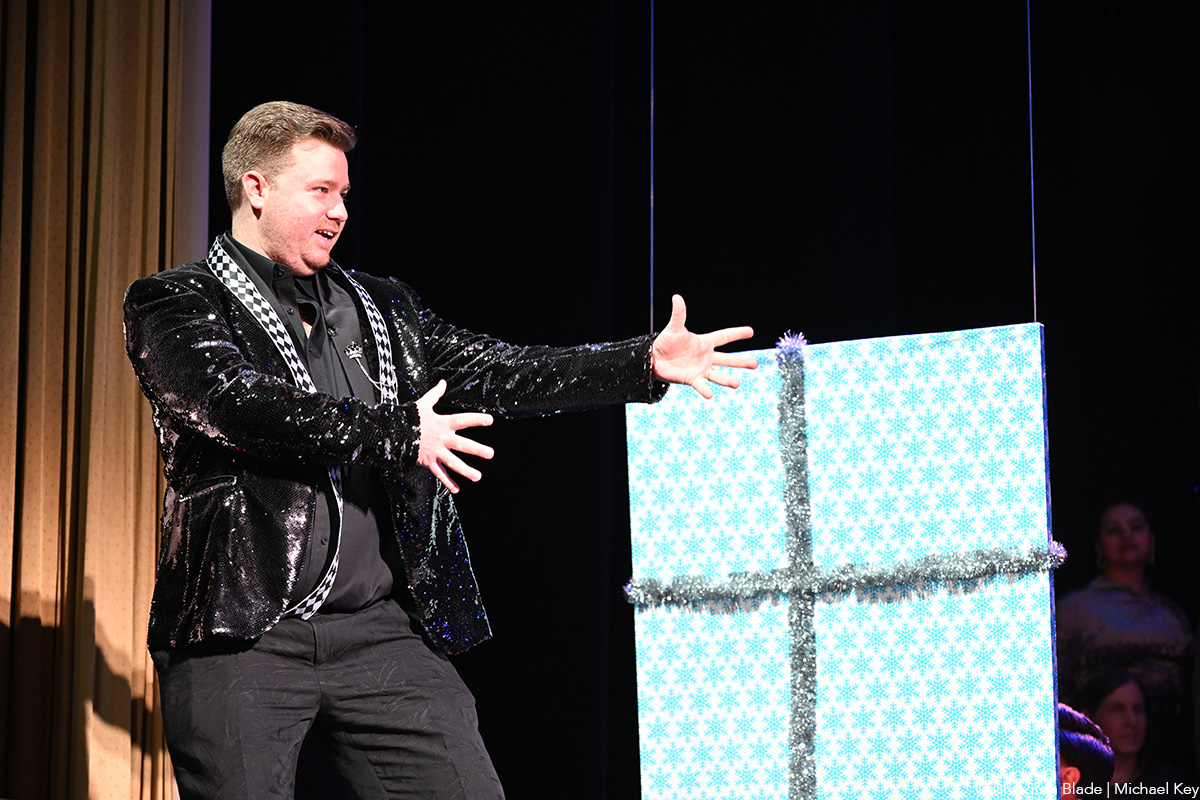

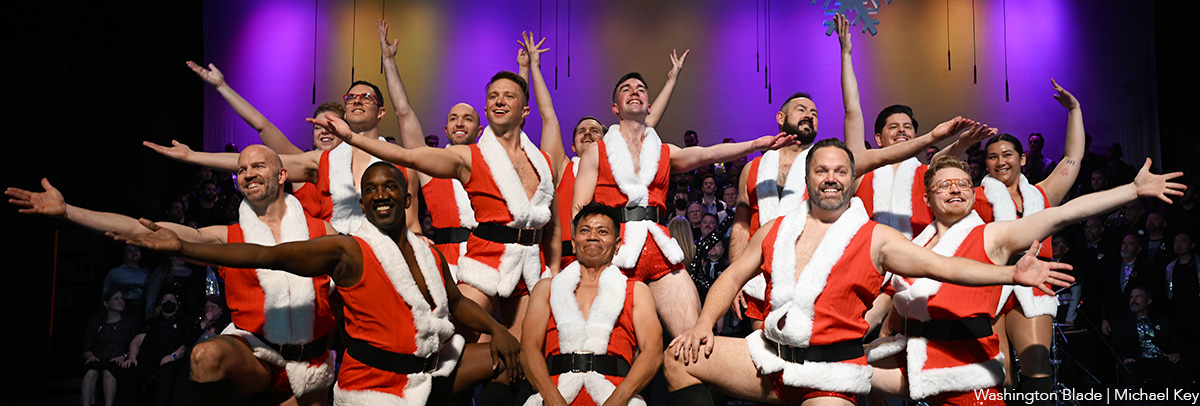
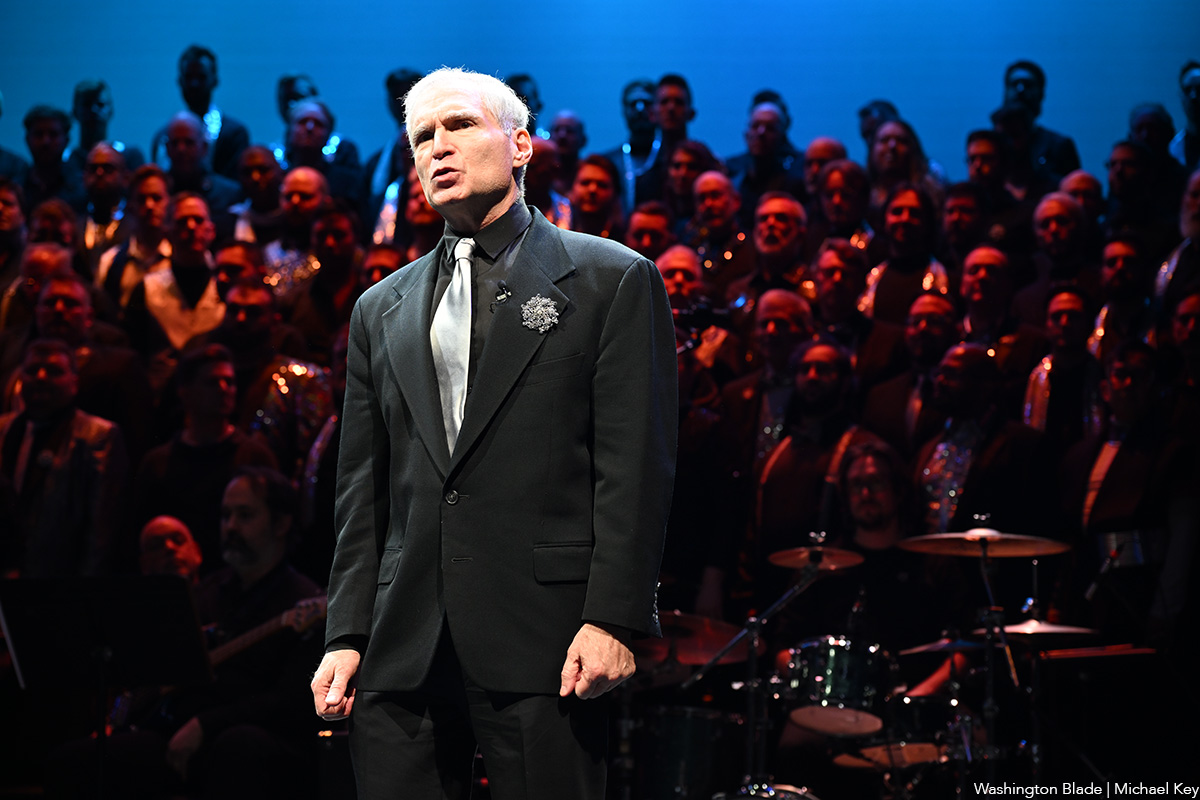


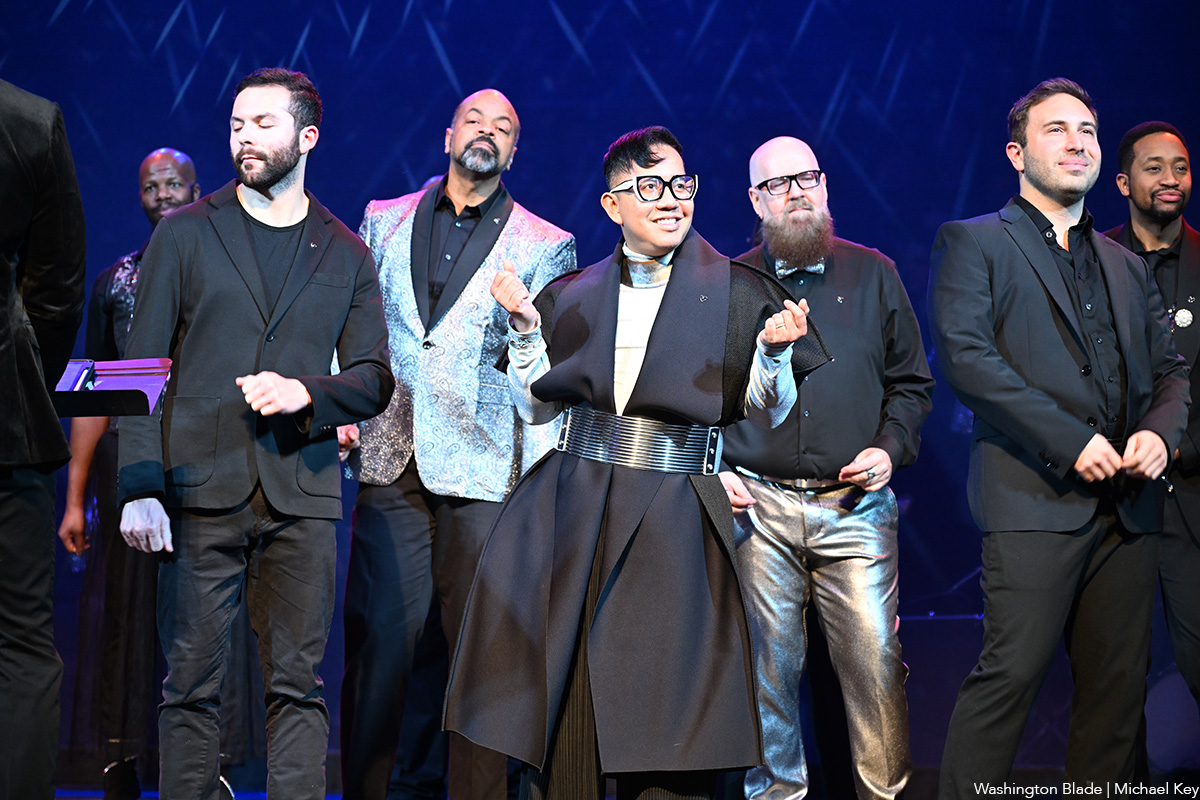


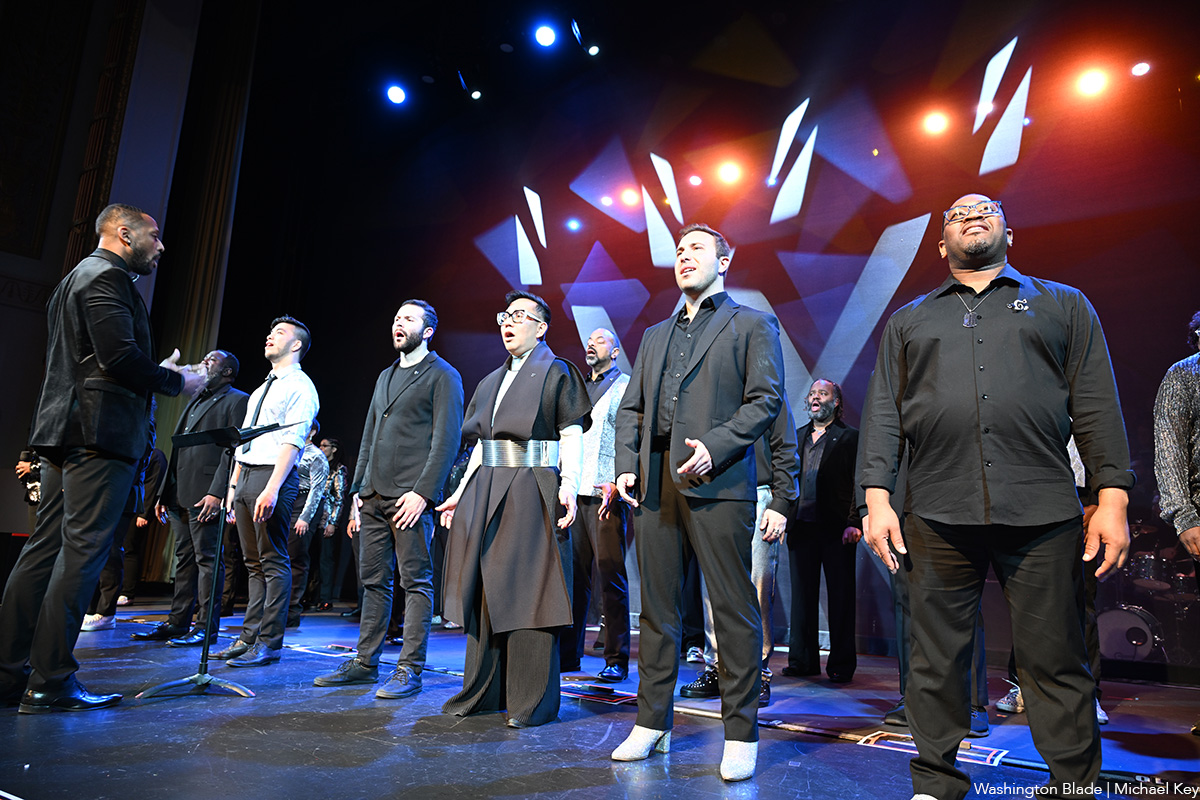


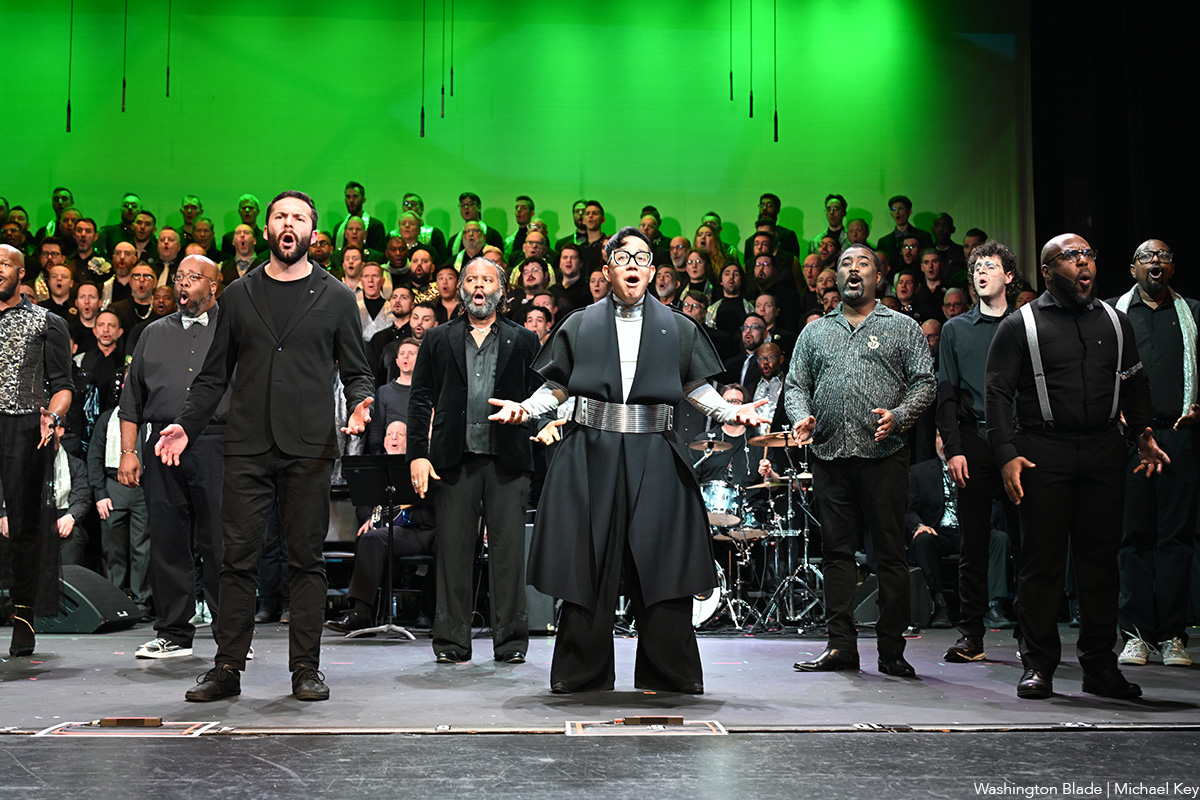
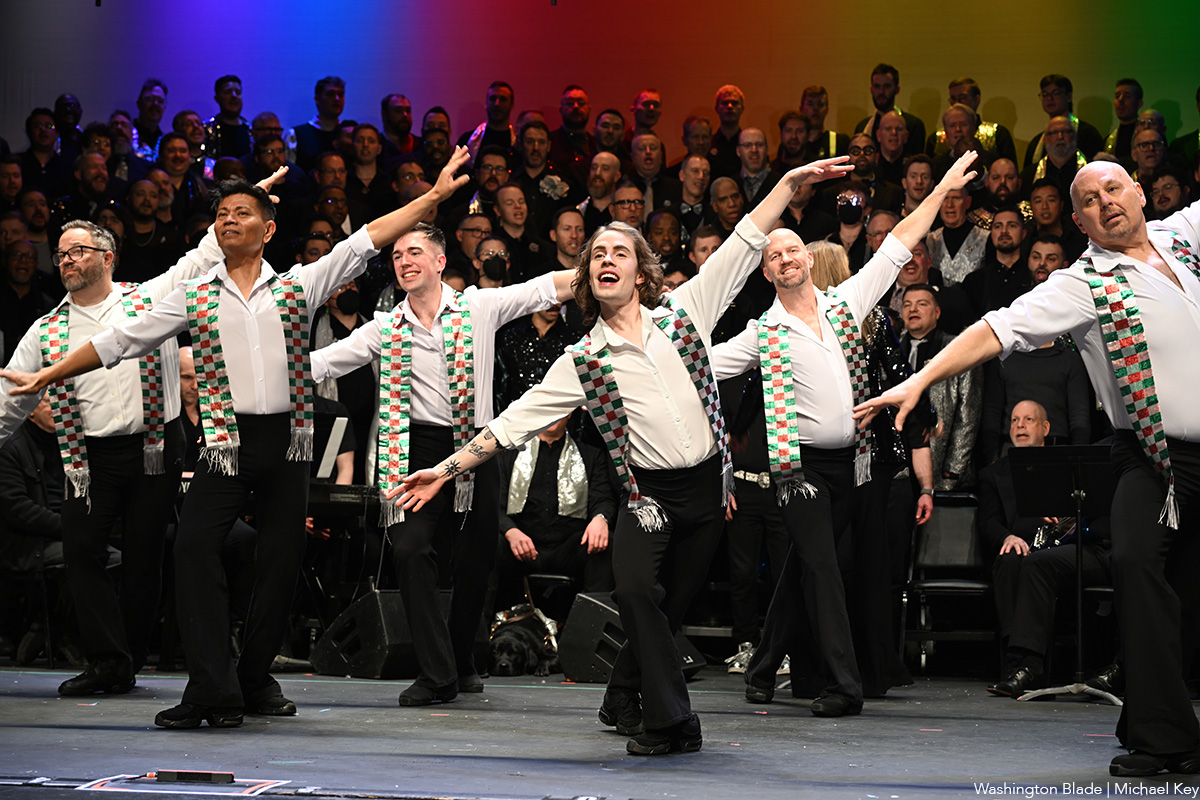

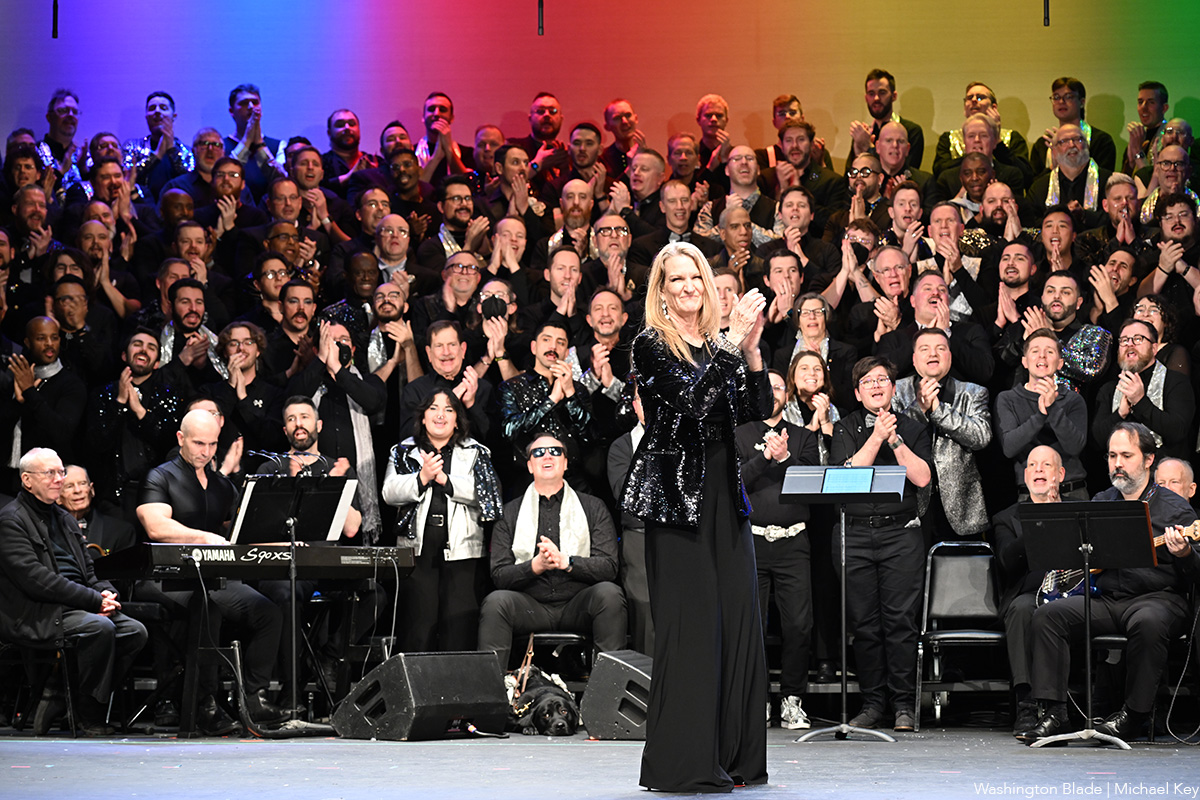
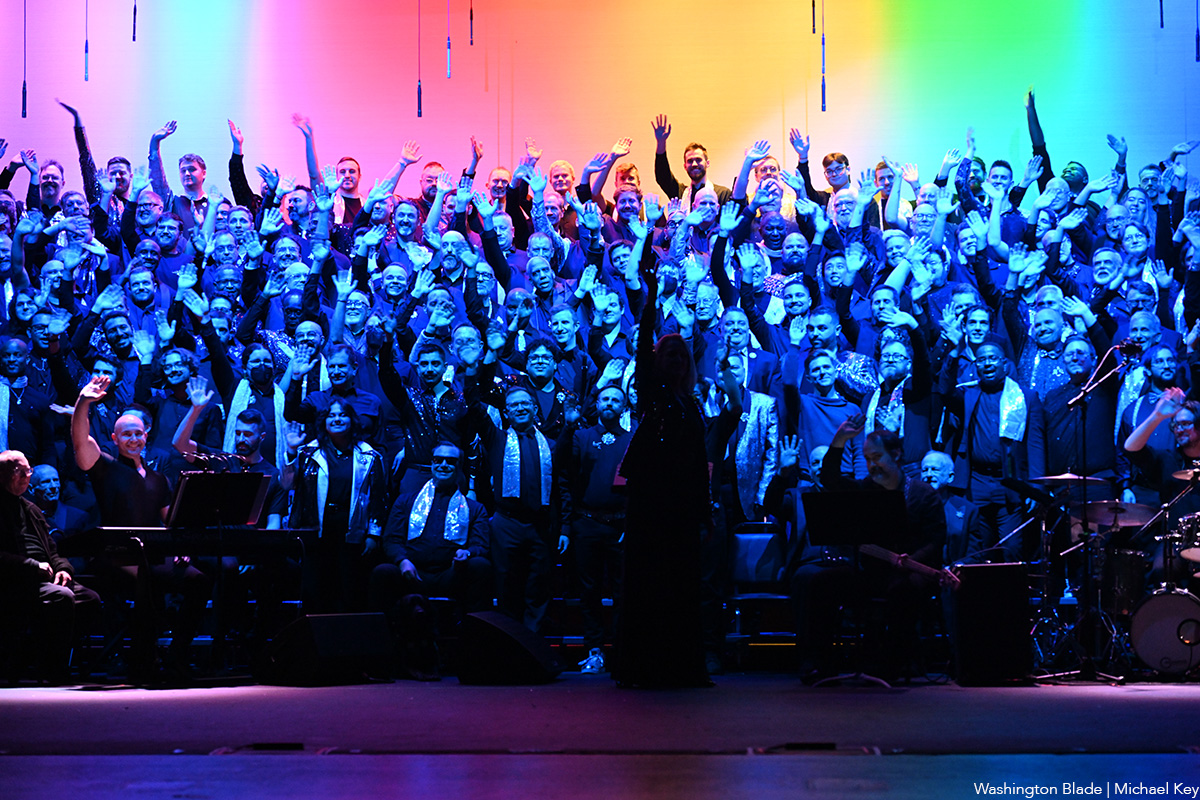

Santa will be very relieved.
You’ve taken most of the burden off him by making a list and checking it twice on his behalf. The gift-buying in your house is almost done – except for those few people who are just so darn hard to buy for. So what do you give to the person who has (almost) everything? You give them a good book, like maybe one of these.
Memoir and biography
The person who loves digging into a multi-level memoir will be happy unwrapping “Blessings and Disasters: A Story of Alabama” by Alexis Okeowo (Henry Holt). It’s a memoir about growing up Black in what was once practically ground zero for the Confederacy. It’s about inequality, it busts stereotypes, and yet it still oozes love of place. You can’t go wrong if you wrap it up with “Queen Mother: Black Nationalism, Reparations, and the Untold Story of Audley Moore” by Ashley D. Farmer (Pantheon). It’s a chunky book with a memoir with meaning and plenty of thought.
For the giftee on your list who loves to laugh, wrap up “In My Remaining Years” by Jean Grae (Flatiron Books). It’s part memoir, part comedy, a look back at the late-last-century, part how-did-you-get-to-middle-age-already? and all fun. Wrap it up with “Here We Go: Lessons for Living Fearlessly from Two Traveling Nanas” by Eleanor Hamby and Dr. Sandra Hazellip with Elisa Petrini (Viking). It’s about the adventures of two 80-something best friends who seize life by the horns – something your giftee should do, too.
If there’ll be someone at your holiday table who’s finally coming home this year, wrap up “How I Found Myself in the Midwest” by Steve Grove (Simon & Schuster). It’s the story of a Silicon Valley worker who gives up his job and moves with his family to Minnesota, which was once home to him. That was around the time the pandemic hit, George Floyd was murdered, and life in general had been thrown into chaos. How does someone reconcile what was with what is now? Pair it with “Homestand: Small Town Baseball and the Fight for the Soul of America” by Will Bardenwerper (Doubleday). It’s set in New York and but isn’t that small-town feel universal, no matter where it comes from?
Won’t the adventurer on your list be happy when they unwrap “I Live Underwater” by Max Gene Nohl (University of Wisconsin Press)? They will, when they realize that this book is by a former deep-sea diver, treasure hunter, and all-around daredevil who changed the way we look for things under water. Nohl died more than 60 years ago, but his never-before-published memoir is fresh and relevant and will be a fun read for the right person.
If celeb bios are your giftee’s thing, then look for “The Luckiest” by Kelly Cervantes (BenBella Books). It’s the Midwest-to-New-York-City story of an actress and her life, her marriage, and what she did when tragedy hit. Filled with grace, it’s a winner.
Your music lover won’t want to open any other gifts if you give “Only God Can Judge Me: The Many Lives of Tupac Shakur” by Jeff Pearlman (Mariner Books). It’s the story of the life, death, and everything in-between about this iconic performer, including the mythology that he left behind. Has it been three decades since Tupac died? It has, but your music lover never forgets. Wrap it up with “Point Blank (Quick Studies)” by Bob Dylan, text by Eddie Gorodetsky, Lucy Sante, and Jackie Hamilton (Simon & Schuster), a book of Dylan’s drawings and artwork. This is a very nice coffee-table size book that will be absolutely perfect for fans of the great singer and for folks who love art.
For the giftee who’s concerned with their fellow man, “The Lost and the Found: A True Story of Homelessness, Found Family and Second Chances” by Kevin Fagan (One Signal / Atria) may be the book to give. It’s a story of two “unhoused” people in San Francisco, one of the country’s wealthiest cities, and their struggles. There’s hope in this book, but also trouble and your giftee will love it.
For the person on your list who suffered loss this year, give “Pine Melody” by Stacey Meadows (Independently Published), a memoir of loss, grief, and healing while remembering the person gone.
LGBTQ fiction
For the mystery lover who wants something different, try “Crime Ink: Iconic,” edited by John Copenhaver and Salem West (Bywater Books), a collection of short stories inspired by “queer legends” and allies you know. Psychological thrillers, creepy crime, cozies, they’re here.
Novel lovers will want to curl up this winter with “Middle Spoon” by Alejandro Varela (Viking), a book about a man who appears to have it all, until his heart is broken and the fix for it is one he doesn’t quite understand and neither does anyone he loves.
LGBTQ studies – nonfiction
For the young man who’s struggling with issues of gender, “Before They Were Men” by Jacob Tobia (Harmony Books) might be a good gift this year. These essays on manhood in today’s world works to widen our conversations on the role politics and feminism play in understanding masculinity and how it’s time we open our minds.
If there’s someone on your gift list who had a tough growing-up (didn’t we all?), then wrap up “I’m Prancing as Fast as I Can” by Jon Kinnally (Permuted Press / Simon & Schuster). Kinnally was once an awkward kid but he grew up to be a writer for TV shows you’ll recognize. You can’t go wrong gifting a story like that. Better idea: wrap it up with “So Gay for You: Friendship, Found Family, & The Show That Started It All” by Leisha Hailey & Kate Moennig (St. Martin’s Press), a book about a little TV show that launched a BFF-ship.
Who doesn’t have a giftee who loves music? You sure do, so wrap up “The Secret Public: How Music Moved Queer Culture from the Margins to the Mainstream” by Jon Savage (Liveright). Nobody has to tell your giftee that queer folk left their mark on music, but they’ll love reading the stories in this book and knowing what they didn’t know.
The Blade may receive commissions from qualifying purchases made via this post.
Theater
Studio’s ‘Mother Play’ draws from lesbian playwright’s past
A poignant memory piece laced with sadness and wry laughs
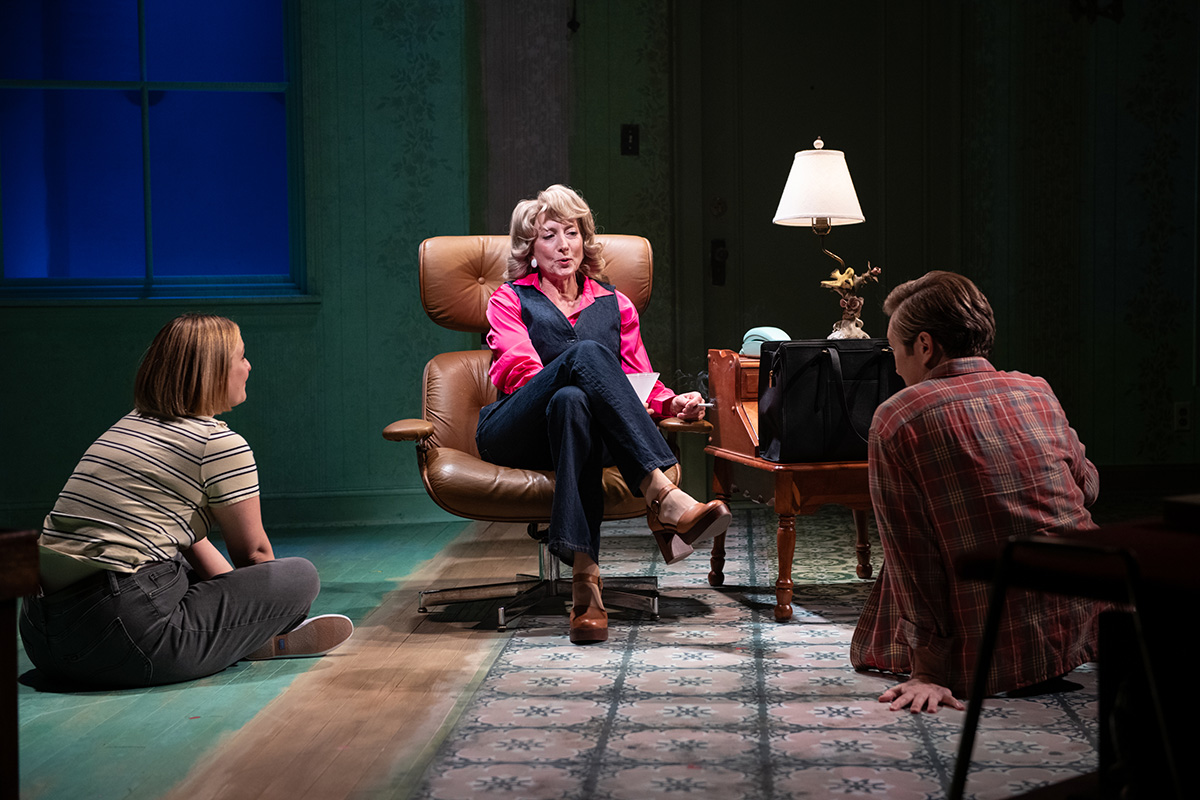
‘The Mother Play’
Through Jan. 4
Studio Theatre
1501 14th St., N.W.
$42 – $112
Studiotheatre.org
“The Mother Play” isn’t the first work by Pulitzer Prize-winning lesbian playwright Paula Vogel that draws from her past. It’s just the most recent.
Currently enjoying an extended run at Studio Theatre, “The Mother Play,” (also known as “The Mother Play: A Play in Five Evictions,” or more simply, “Mother Play”) is a 90-minute powerful and poignant memory piece laced with sadness and wry laughs.
The mother in question is Phyllis Herman (played exquisitely by Kate Eastwood Norris), a divorced government secretary bringing up two children under difficult circumstances. When we meet them it’s 1964 and the family is living in a depressing subterranean apartment adjacent to the building’s trash room.
Phyllis isn’t exactly cut out for single motherhood; an alcoholic chain-smoker with two gay offspring, Carl and Martha, both in their early teens, she seems beyond her depth.
In spite (or because of) the challenges, things are never dull in the Herman home. Phyllis is warring with landlords, drinking, or involved in some other domestic intrigue. At the same time, Carl is glued to books by authors like Jane Austen, and queer novelist Lytton Strachey, while Martha is charged with topping off mother’s drinks, not a mean feat.
Despite having an emotionally and physically withholding parent, adolescent Martha is finding her way. Fortunately, she has nurturing older brother Carl (the excellent Stanley Bahorek) who introduces her to queer classics like “The Well of Loneliness” by Radclyffe Hall, and encourages Martha to pursue lofty learning goals.
Zoe Mann’s Martha is just how you might imagine the young Vogel – bright, searching, and a tad awkward.
As the play moves through the decades, Martha becomes an increasingly confident young lesbian before sliding comfortably into early middle age. Over time, her attitude toward her mother becomes more sympathetic. It’s a convincing and pleasing performance.
Phyllis is big on appearances, mainly her own. She has good taste and a sharp eye for thrift store and Goodwill finds including Chanel or a Von Furstenberg wrap dress (which looks smashing on Eastwood Norris, by the way), crowned with the blonde wig of the moment.
Time and place figure heavily into Vogel’s play. The setting is specific: “A series of apartments in Prince George’s and Montgomery County from 1964 to the 21st century, from subbasement custodial units that would now be Section 8 housing to 3-bedroom units.”
Krit Robinson’s cunning set allows for quick costume and prop changes as decades seamlessly move from one to the next. And if by magic, projection designer Shawn Boyle periodically covers the walls with scurrying roaches, a persistent problem for these renters.
Margot Bordelon directs with sensitivity and nuance. Her take on Vogel’s tragicomedy hits all the marks.
Near the play’s end, there’s a scene sometimes referred to as “The Phyllis Ballet.” Here, mother sits onstage silently in front of her dressing table mirror. She is removed of artifice and oozes a mixture of vulnerability but not without some strength. It’s longish for a wordless scene, but Bordelon has paced it perfectly.
When Martha arranges a night of family fun with mom and now out and proud brother at Lost and Found (the legendary D.C. gay disco), the plan backfires spectacularly. Not long after, Phyllis’ desire for outside approval resurfaces tenfold, evidenced by extreme discomfort when Carl, her favorite child, becomes visibly ill with HIV/AIDS symptoms.
Other semi-autobiographical plays from the DMV native’s oeuvre include “The Baltimore Waltz,” a darkly funny, yet moving piece written in memory of her brother (Carl Vogel), who died of AIDS in 1988. The playwright additionally wrote “How I Learned to Drive,” an acclaimed play heavily inspired by her own experiences with sexual abuse as a teenager.
“The Mother Play” made its debut on Broadway in 2024, featuring Jessica Lange in the eponymous role, earning her a Tony Award nomination.
Like other real-life matriarch inspired characters (Mary Tyrone, Amanda Wingfield, Violet Weston to name a few) Phyllis Herman seems poised to join that pantheon of complicated, women.

















